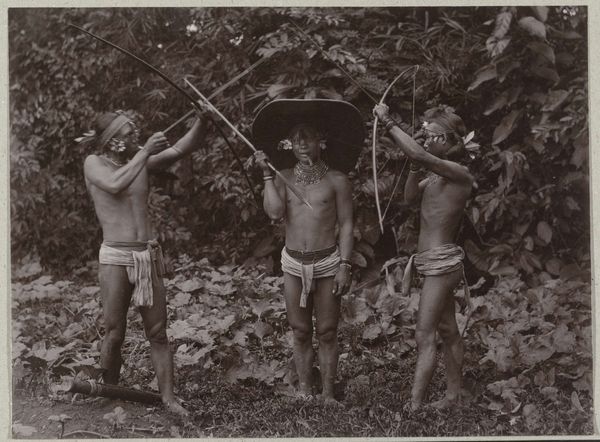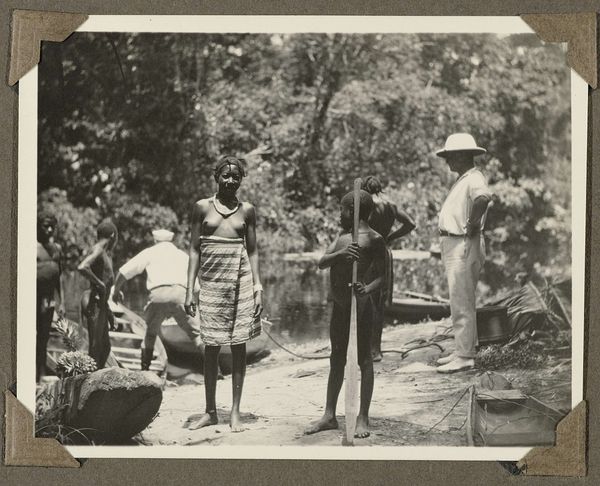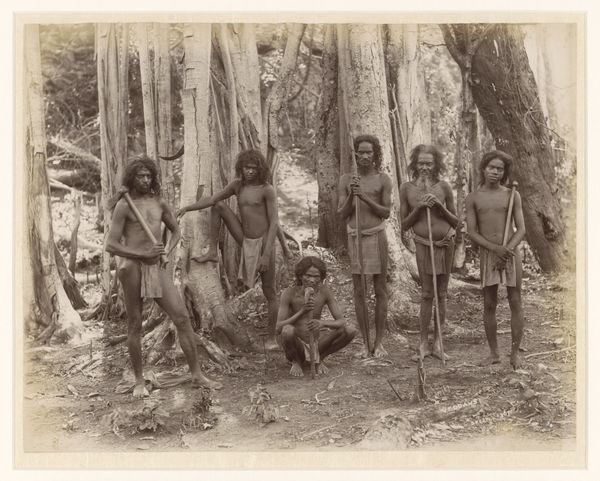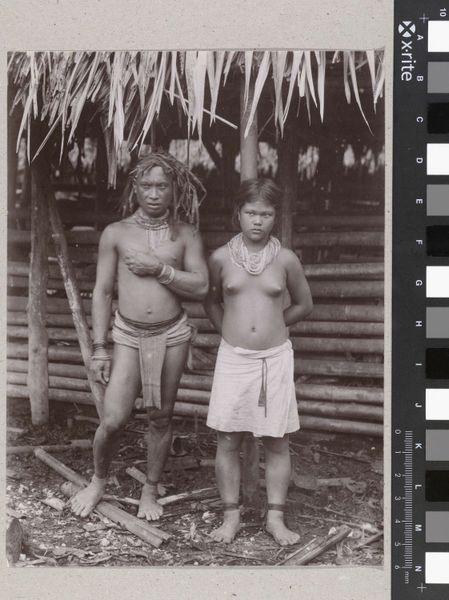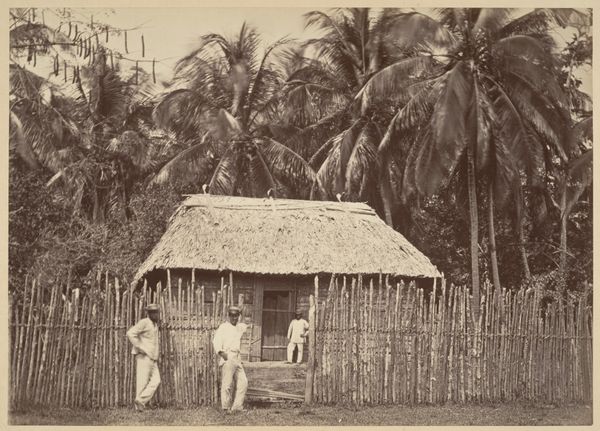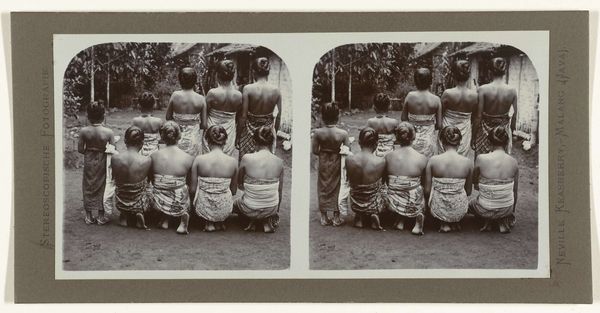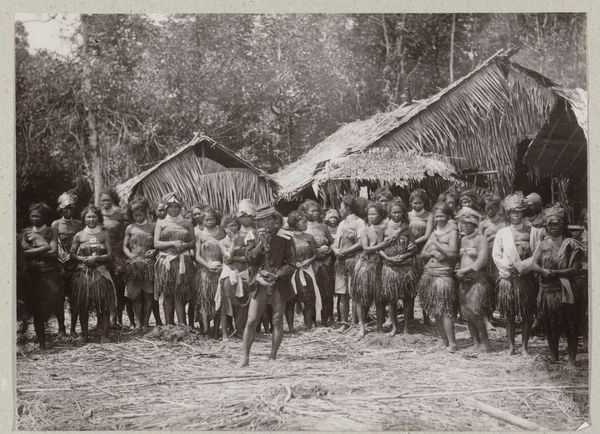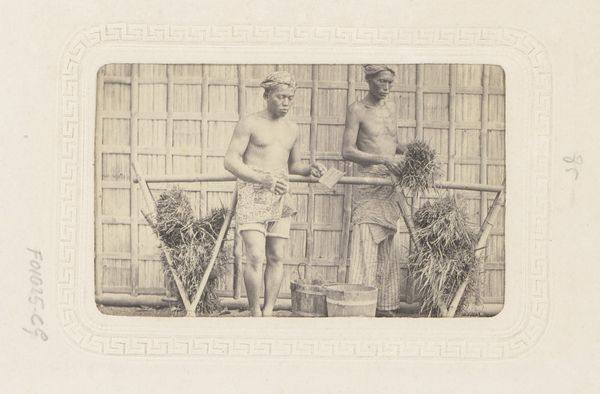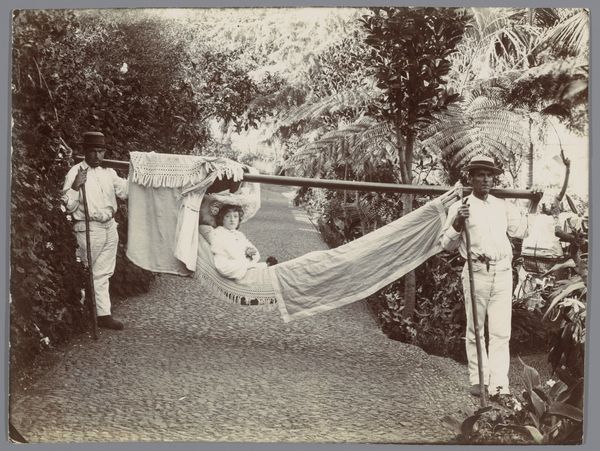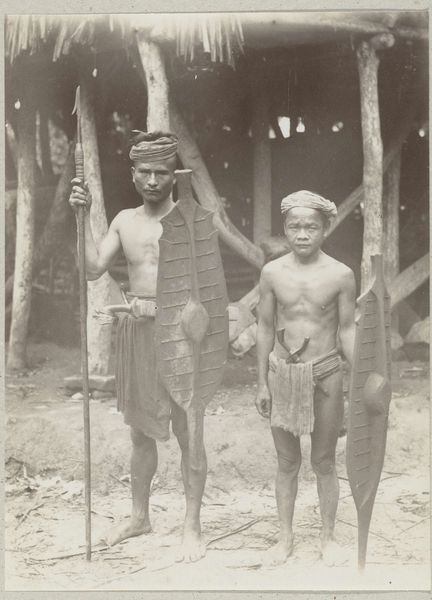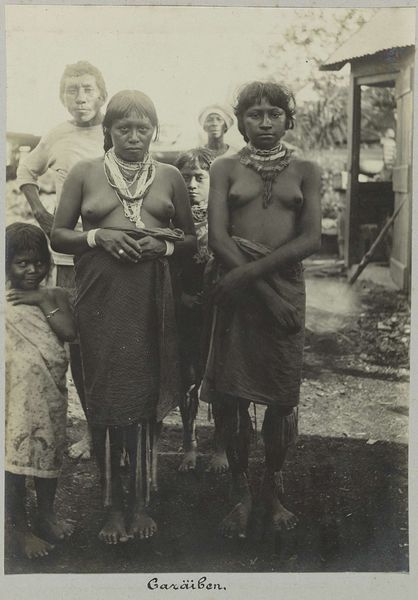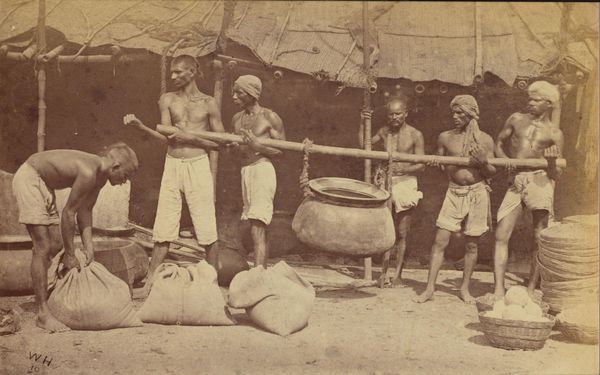
#
light pencil work
#
wedding photograph
#
photo restoration
#
wedding promotion
#
wedding photography
#
pencil sketch
#
old engraving style
#
wedding around the world
#
old-timey
#
19th century
Dimensions: height 175 mm, width 238 mm
Copyright: Rijks Museum: Open Domain
Curator: The photograph before us, taken by Onnes Kurkdjian around 1912, is titled "Indonesische jongens in kostuums dansen met krissen in de hand" – "Indonesian boys in costumes dancing with krises in hand." It's quite striking. What are your initial thoughts? Editor: I am immediately drawn to the figures themselves. Their confident stances, contrasted with their almost ceremonial weaponry, and what appear to be ritual costumes speak of preparation – and defense. Is this for performance, perhaps a rite of passage, or something more? Curator: It’s likely a staged performance, a cultural demonstration perhaps aimed at a European audience, considering the photographer's background. It raises questions about representation and the gaze – who is this performance for, and what does it say about the relationship between the colonizer and the colonized? Editor: Right, the krises themselves, what do we know about them symbolically in Indonesian culture? The wavy blade design carries significant weight and has deep cultural associations with power, protection, and even spiritual guidance. This photograph feels poised between honoring tradition and performing it. Curator: Absolutely. Notice how the boys' attire blends elements of both performance costume and traditional garb. This layering speaks to the complex negotiation of identity that occurs under colonial rule – a tension between preserving cultural heritage and adapting to external pressures. Editor: The headdresses also appear very deliberate: I detect flora – are those flower arrangements intentional and what messages could be encoded within them? What might a botanist studying Javanese culture at that time interpret from this, relating to symbolic visual markers about maturity or rank? Curator: These questions lead us to examine broader patterns. The staged photograph was part of a wider trend. These images would be widely distributed, reinforcing exoticised notions of Indonesian culture in Europe and, to a large extent, obscuring complex social and political realities. The image is part of a process of framing and understanding between disparate people. Editor: Exactly. To view this now it demands careful unpicking of not only what is shown, but who took the photo and when. These interwoven histories are all important layers to the visual symbolism on display. Curator: A photograph like this one serves as a reminder of art’s deeply rooted entanglements with power, representation, and social change. We can engage with the complexity with which we now approach questions of colonialism. Editor: Yes, it urges me to probe deeper into visual signs and what each individual symbolic marker in that framework meant, when these dancers and weapons meet Western interpretation. It all combines for us to revisit now.
Comments
No comments
Be the first to comment and join the conversation on the ultimate creative platform.
